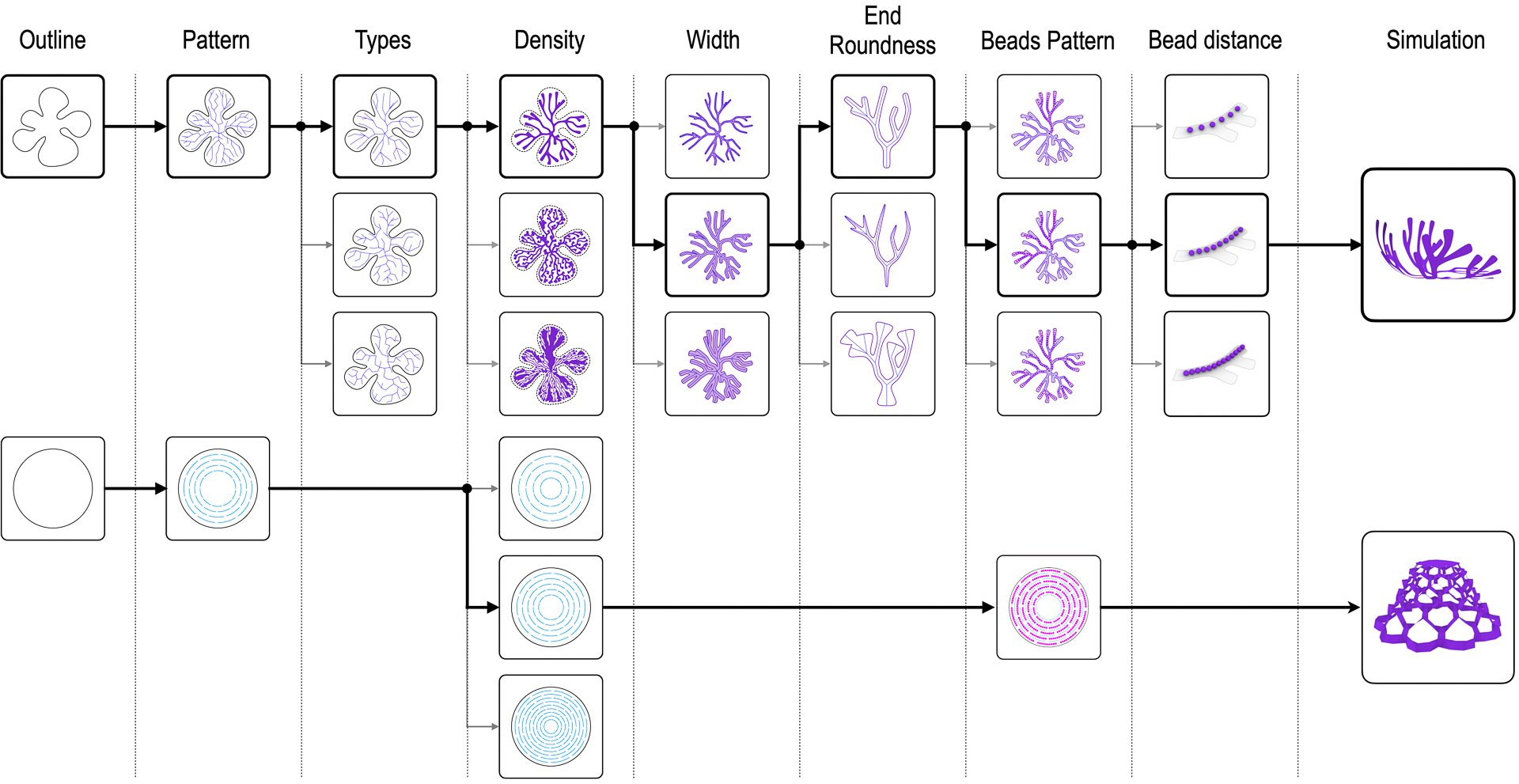
Ocean Garden: Underwater Morphing Beads towards Ocean Conservation
We propose a water-triggered morphing mechanism that utilizes the distance between adjacent hydrogel beads adhered on a thin substrate to control their bending angle. This paper describes the bending angle quantification experiments for creating a simulator, the process of developing a computational tool along with its user-friendly workflow and demonstrates kirigami and branch-based artifacts built with the tool.
Harshika Jain*, Kexin Lu*, and Lining Yao✉ (* Contributed Equally)
The ACM conference on Designing Interactive Systems (DIS) 2021 PDF | DOI | Presentation
🏅 Award: Video Runner Up prize for #SmartOceansChallenge, Smart Oceans 2020
💾 Download the Tool: Github
📌 Making Tutorials: MM4Girls
Morphing Mechanism
Taking advantage of the unique properties of hydrogels, we propose a way to create low-cost, easy to fabricate hydrogel-based structures with readily available materials which self-actuate in water. These can be flattened and packed in a compact manner owing to their fabrication technique. Upon deployment, they self morph due to osmosis using water as a simulant and grow into free-standing 3D structures. The morphing structures retain their 3D geometry underwater due to buoyancy and constant hydration of the hydrogel.
The detailed quantification of the distance between hydrogel beads on a substrate to control the bending angle of self-actuating structures is shared in the paper.
Morphing Algorithm and Generative Design
A computational platform and simulator for creating generative geometries such as kirigami1 and branch-based structures and simulating their morphing behavior. Morphing primitives that serve as the building blocks for these are also provided.
💾 Download the Tool: Github
Long Term Vision - Ocean Garden as Baby Fish Refuges Under Coral Bleaching
We envisioned that a potential long-term use of the hydrogel structures is to leverage them as a temporary refuge for small fish (~1 inch in length) in coral. When a coral habitat depletes due to ocean acidification, a ship running aground, etc., the whole ecosystem around it depletes. The fish living in corals don’t have a place to live and they go away, due to which the corals don’t get restored and it becomes a death spiral. The addition of a fake habitat can attract fish back; the fish eat the algae which eliminates corals, and thus the corals can survive better. The concept of a temporary fish refuge has been presented and validated in recent literature depleted areas.
We conducted an extensive detailed interview with a marine scientist, who responded positively to our morphing structures as a temporary refuge for small fish in coral depleted areas. She was positive that these can be used in other habitat limited areas as well such as for rehabilitating oyster reefs, for recreating grass-blade-like holdfasts for seahorses, reviving the spiny lobster population, etc. Furthermore, she suggested that these artifacts being very low cost and affordable due to their construction materials and methods will be beneficial for developing nations.
As for the next step, we are refining the materials and manufacturing processes, aiming at a lab and field test.






